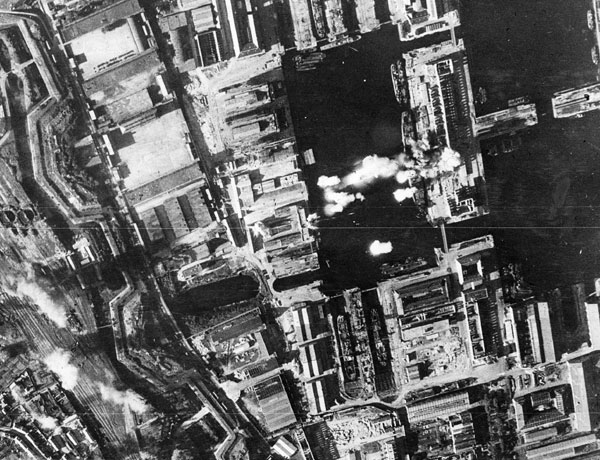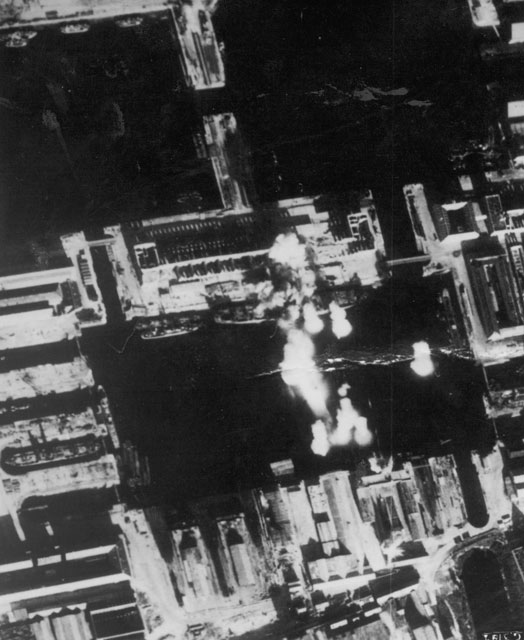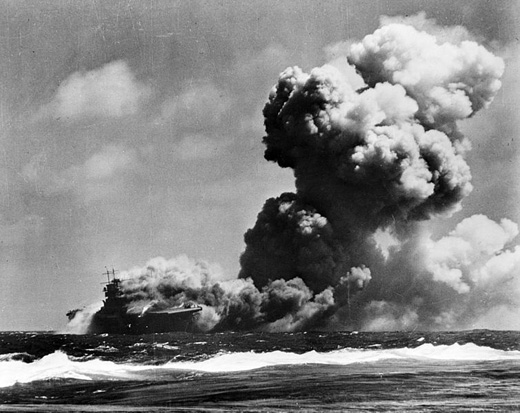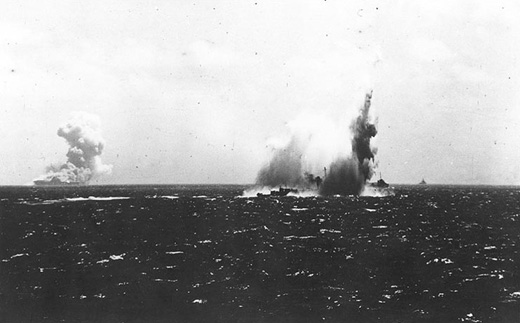Air Operations, Aleutians
XI Fighter Command aircraft strafe ground targets on Kiska.
[Air Operations, Bismarcks
V Bomber Command B-17s attack airfields in the Rabaul area.
[Air Operations, Egypt
USAMEAF B-24s and 57th Fighter Group P-40s support RAF attacks on German Army facilites and troops west of El Alamein.
[Air Operations, Europe
BOMBER COMMANDDaylight Ops:
- 12 Bostons attack whaling factory ship Solglint in Cherbourg harbor, ship is set on fire and gutted; no losses.
|
|
- 27 Wellingtons and 13 Stirlings of 1 and 3 Groups lay mines in the Frisians and off Verdon without loss.
Vickers Anti-Aircraft Tank |
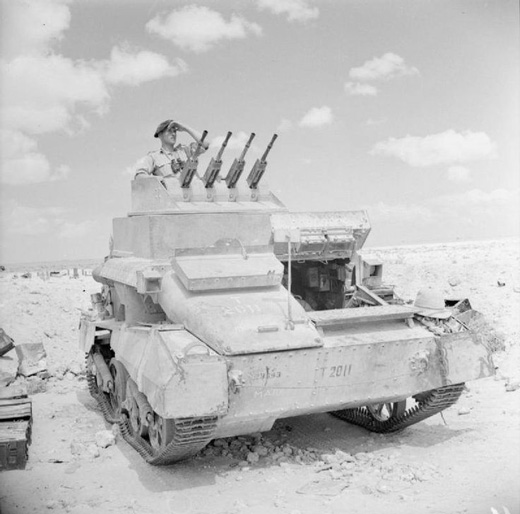 |
Air Operations, Greece
A lone B-24 sent to reconnoiter Suda Bay claims 1 hit for 1 bomb on an Axis tanker.
[Air Operations, New Guinea
V Bomber Command B-25s and 22nd Medium Bomb Group B-26s attack Buna, Sanananda, and Japanese Army bases in the Owen Stanley Mountains.
[Air Operations, Solomons
11th Heavy Bomb Group B-17s mount 5 separate attacks against the Japanese Navy seaplane base at Rekata Bay, Santa Isabel.
[Battle of the Atlantic
Whitley 'B' of No 58 Squadron sights U-261 on the surface at a distance of seven miles. The aircraft drops three depth charges through low cloud hitting the conning tower with one and straddling the U-boat with the other two. After a second attack the U-boat sinks stern first.
| Class | Type VIIC |
| CO | Kapitänleutnant Hans Lange |
| Location | Atlantic, NW of Cape Wrath |
| Cause | Air attack |
| Casualties | 43 |
| Survivors | None |
Eastern Front
The Germans attack powerfully in the center of Stalingrad. Hundreds of dive-bombers assault the city. The Russian defenders, holed up in the factories, hold out. The Rodimtsev Division is ordered to 'clear' the Germans from Mamai Hill and the railway station in the city center. The railway station will change hands several times in the course of the battle.
SOUTHERN SECTORThe newly committed 13th Guards attack from its small bridgehead, crashing into the 71st Infantry Division. Bitter battles rage for control of the central railway station, which changes hands frequently. Other elements of the 13th Guards launch a fierce attack upon the Mamayev Kugan, hitting the 295th Infantry Division. While the 13th Guards launch its attacks, the 71st and 295th Infantry Divisions again try to push into the city center. To the south, the 94th Infantry, 24th and 14th Panzer Divisions fight their way through Dar Gova, Mnina and Yelshanka as they try to smash open the junction of the 64th and 62nd Armies at Kuporosnoye. During the night, Chuikov brings more units of the 13th Guards across the Volga into Stalingrad.
Columns of Soviet PoWs |
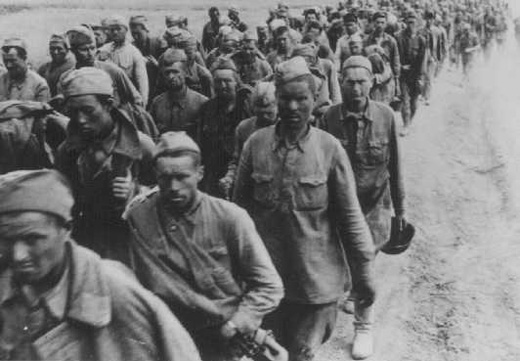 |
Guadalcanal
The 5th Marines, 1st Marine Division, extends its positions south of Henderson Field to include Bloody Ridge. The enemy southeast of the Lunga perimeter continues to fire intermittently on the 3rd Battalion of the 1st Marines which are also hit by shells from a Japanese battleship.
[New Guinea
The first American infantry units, units of the 32nd Inf Div, arrive at Port Moresby from Australia. Along with these infantry are also some engineering and anti-aircraft units.
[Pacific
An American task force commanded by Rear-Adm Noyes, escorting a convoy taking reinforcements to Guadalcanal from Espiritu Santo, in the New Hebrides, is attacked by 2 Japanese submarines. The I-19, under Commander Narahara, fires 6 torpedoes which, in turn, hit the battleship North Carolina (BB-55), the destroyer O-Brien (DD-415), a strike of 3 on the Wasp (CV-7), and a near miss at the carrier Hornet (CV-8). The attack sinks the aircraft carrier Wasp (CV-7) and damages the battleship North Carolina (BB-55) and the destroyer O'Brien (DD-415).[MORE]
|
|
